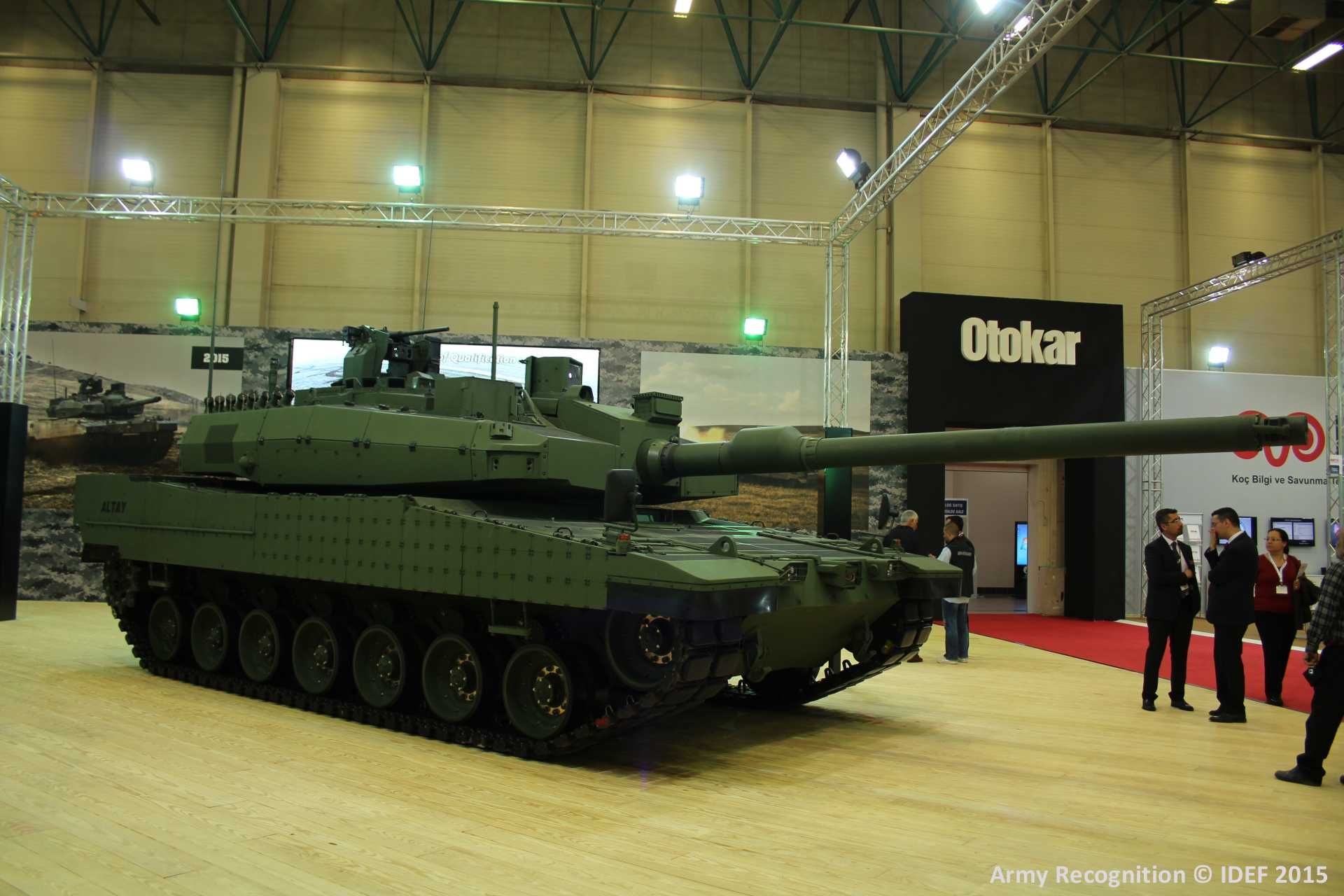Breaking News
Analysis: Could Türkiye's new Altay tank stand out against NATO rivals like the Abrams and Leopard?.
As reported by Turkish Century on January 11, 2025, the new Altay main battle tank (MBT) is set to play a pivotal role in enhancing the armored capabilities of both the Turkish Armed Forces and its international partners. Indeed, this new tank, expected to enter service in 2025, could offer several advantages over modern NATO tanks like the M1A2 SEPv3 Abrams, Leopard 2A8, Leclerc XLR, K2, Challenger 2, and Ariete. Serial production began in May 2024, and the Turkish Land Forces are the primary operators, with a planned production goal of 1,000 tanks, delivered in four batches of 250 units.
Follow Army Recognition on Google News at this link

Incorporating lessons learned from South Korea’s K2 Black Panther project, the Altay is a fourth-generation main battle tank (MBT) armed with a 120 mm L/55 smoothbore gun produced by MKE under a technology transfer agreement with Hyundai Rotem. (Picture source: BMC)
Compared to the M1A2 SEPv3 Abrams, the Altay's diesel engine offers higher fuel efficiency and simpler maintenance than the Abrams' gas turbine engine, which consumes more fuel and requires more complex servicing. Against the Leopard 2A8, the Altay is equipped with the AKKOR Active Protection System (APS), providing additional defense capabilities against anti-tank guided missiles. In relation to the Leclerc XLR, the Altay’s modular armor design allows for adjustments and upgrades to its protection levels, offering flexibility not available with the Leclerc’s fixed armor configuration.
When compared to the K2 Black Panther, the Altay incorporates adaptations for diverse operational terrains, which could enhance its performance in varied environments. Against the Challenger 2, the Altay's 120mm smoothbore gun and advanced fire control system are compatible with a wider range of NATO-standard ammunition, whereas the Challenger 2's rifled gun is limited to specific types. Finally, in comparison to the Ariete, the Altay features advanced armor and active protection systems, which are not present in the Ariete's older design. These comparative aspects outline the Altay’s position among NATO tanks based on its design and systems integration.
Incorporating lessons learned from South Korea’s K2 Black Panther project, the Altay is a fourth-generation main battle tank (MBT) equipped with a 120 mm L/55 smoothbore gun produced by MKE under a technology transfer agreement with Hyundai Rotem. This main armament can fire a range of NATO-compatible ammunition, with a firing range of approximately 3 km. This is complemented by a suite of secondary armaments, including a 12.7 mm remote-controlled weapon station (RCWS) and a 40 mm grenade launcher. The fire control system, command and control systems, and electric turret drive system are supplied by Aselsan, while the tank’s modular composite armor is produced by Roketsan with design inputs from South Korean firms to provide higher ballistic protection.
The powertrain for the first production lots will feature a Hyundai Doosan DV27K V12 turbodiesel engine delivering 1,500 horsepower, paired with an SNT Dynamics EST15K transmission. Future batches may incorporate the domestically developed BMC Power Batu V12 engine. The Altay has a maximum road speed of 65 km/h, an off-road speed of 45 km/h, and an operational range of 450 kilometers. Its hydropneumatic suspension system is designed to optimize mobility over varied terrains and includes an automatic track tension system. The tank is also equipped with an isolated ammunition compartment, fire and explosion suppression systems, and sensors for detecting chemical, biological, radiological, and nuclear (CBRN) threats.

The Altay originated from Türkiye's National Tank Production Project (MİTÜP), launched in the mid-1990s, and marked Türkiye’s first large-scale tank development since earlier efforts in 1943, which did not progress beyond the prototype stage. (Picture source: Army Recognition)
The Altay originated from Türkiye's National Tank Production Project (MİTÜP), launched in the mid-1990s to establish domestic capabilities for developing and maintaining armored platforms for the Turkish Armed Forces. Officially initiated in 2007, Otokar was selected as the main contractor, with the project incorporating technology transfer and design assistance from South Korea’s Hyundai Rotem, drawing on the K2 Black Panther tank program.
The project progressed through prototype development, with initial models produced in 2012 and testing phases completed by 2016. In 2018, BMC was awarded the contract for serial production, which had been delayed due to embargoes on German MTU engines and RENK transmission exports. To address these issues, South Korean components were adopted, enabling serial production to commence in May 2024. This marked Türkiye’s first large-scale MBT development since earlier efforts in 1943, which did not progress beyond the prototype stage.
The Altay could demonstrate significant export potential, with Qatar reportedly placing an order for 100 units, the first 40 of which are expected within two years. Reported interest has also come from countries such as Azerbaijan, Pakistan, Saudi Arabia, and Oman, with additional potential users identified as Morocco, Indonesia, Bangladesh, and others. Its projected production of 1,000 units by 2035 supports the capacity for international deliveries, aligning with Türkiye’s broader initiative to establish domestic production capabilities for defense exports.
The Altay is now set for phased production, targeting 1,000 units across four batches, with incremental updates planned for each stage. Serial production began in May 2024, with a production rate of at least eight units per month, and the tank is expected to enter service with the Turkish Armed Forces in 2025, for an estimated cost of $13.75 million. Variants include the T1 baseline, the T2 improved model, and the T3 with an unmanned turret, along with configurations for urban operations (AHT), mine-clearing, bridge-laying, and recovery tasks. While the initial batches will use South Korean powertrain components, subsequent units may incorporate domestically developed engines.

Serial production began in May 2024, with a production rate of at least eight units per month, and the tank is expected to enter service with the Turkish Armed Forces in 2025, for an estimated cost of $13.75 million. (Picture source: BMC)


























